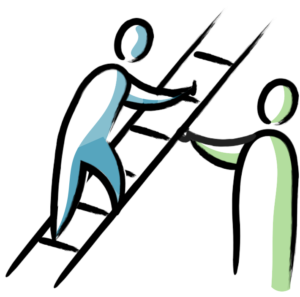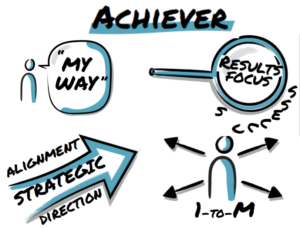This article is a guest post.
The world's gone mad
We have been self-employed for more than 20 years. Up until May 15, everything was right in our world. Client meetings, coaching sessions, workshops, further education courses, and training programs – these things made up most of the dates in our diary. On May 20, this was all suddenly turned on its head.
Client meetings and coaching sessions had to be held remotely. A large number of workshops and training courses were canceled, we had to somehow rework further education courses to create remote options.
And our clients were going through the exact same thing: Hardly anyone was thinking about ordering photo products during the initial Corona lockdown. Companies that draw significant income from advertising very quickly experienced a steep drop in takings. On the other hand, we had companies that provide broadband access or video conferencing solutions. We now experienced a massive spike in demand overnight and suddenly found themselves taken aback by the considerable amount of attention they were receiving on the market.
The Corona crisis and the upheaval it caused in the economy are an extreme example of market disruption – extreme because it not only affected individual companies, industries, or countries but everyone on a global scale in every respect. It is an exceptional case of the much-cited VUCA scenario. Companies suddenly found themselves in a situation shaped by volatility, uncertainty, complexity, and ambiguity.
Adaptability is your ace in the hole
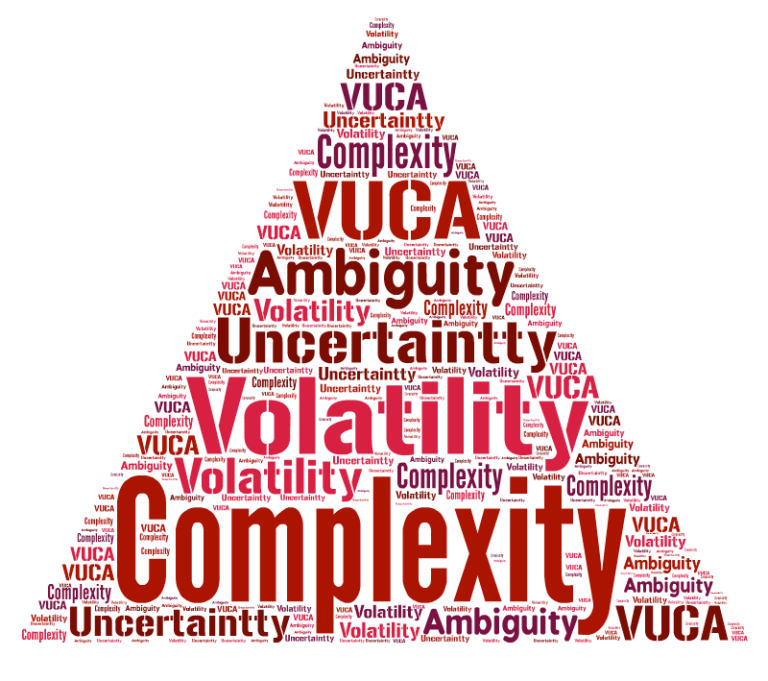
As companies, in situations like this, we have to be able to reorient ourselves very quickly, learn fast, and adapt swiftly.
The supply difficulties VW and Daimler have had with the ID.3 show just hard it has been for them to transform themselves from engineering-focused production companies to software companies. We'll probably be left waiting even longer for a mobile payment option from our own trusted bank.
Flexible, adaptive organizations can quickly react to such changes and rely on three fundamental principles to do so:
- Experimenting and learning fast
- Aligning all of their activities with the added value for the customer
- Including all employees in the generation of ideas and setting the course
When it comes to experimentation and learning fast, agile working methods provide us with proven approaches that support us with both the "what" (products) and the "how" (methods).
Aligning all activities with the added value for the customer isn't the same as being "customer-oriented," which all companies claim to be anyway. Here, it is more about considering the flow of value (almost) exclusively from the perspective of the customer: What provides the customer with real added value? How do we generate as much added value for the customer as possible? How do we eliminate waiting times for the customer? This can only be successful if companies are prepared to relinquish resource-optimized value streams in favor of value streams optimized for better flow times.
Leadership won't become redundant, but it will change
While these two principles are rather methodical and technocratic, the third principle goes right to the core. Complex environments require creative ideas, experimentation, and fast learning. And that doesn't work in settings where people take a back seat because "the boss will take care of it."
Instead, we need to activate the collective intelligence of all employees in the company. As Peter Kruse said, "The era of the thought leader is over."
Leadership agility
In our work with organizations, we meet plenty of leaders who want precisely that: they wish their teams would contribute more and take on more responsibility. But they often then realize that merely expressing such a wish is not enough if the team is used to working with individual targets and highly controlling management.
They gradually recognize how significant a role their own leadership style, their attitude towards others in the team, and their personal capacity for self-reflection play in the success of their plan to get all of the employees actively involved.
Do we have a culture of trust and openness in our team, or is it characterized by control and assessment? How do we approach generating ideas or making decisions within the team – can I create open-dialog processes, or do I always hold onto the trump card in the end? What is our approach to mistakes? Are they something we have to clear up as quickly as possible? Or do we take the time to learn from them collectively?
These are just a few of the potential questions that demonstrate that it is by no means easy to develop a leadership style that enables real involvement. To live out this style of leadership authentically, not only do I need the methodical know-how, but I also need to display the readiness and openness to address the constellation of human relations within the team, take on feedback, and critically examine my own behavior.
The Leadership Agility model by Bill Joiner and Stephen Josephs is a very descriptive and helpful tool that explains this development process clearly. It describes the development of leadership, not only as an increase in methods and tools available but also as growth in terms of cognitive and emotional capacity and the new attitudes that result in three (in fact, five) development levels.
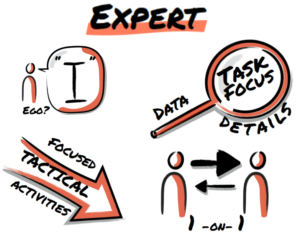
A leader who also masters the Achiever Leadership style sees it as their responsibility to lead people so that they can deliver excellent results. Motivating objectives are intended to drive teams or departments to collaborate in a results-oriented way. Objectives and results play a decisive role in Achiever Leaders. They strongly rely on those team members that are on the same wavelength as them and consider teamwork to be the key to success.
Moving out of the responsibility trap to become a Catalyst Leader
What both of the previous styles have in common is the central focus on the leader who steers their team towards objectives that they set themselves. For this reason, both of these styles are described as "heroic" leadership styles in the Leadership Agility model. Leaders who are only able to use these two styles are in danger of falling into the so-called responsibility trap. Here, the leader is under the impression that they are the only ones who can give the customer the right answers, that they must retain control of the coordination for the next product review.
They consider their own team to be passive, not prepared to get involved, and not on the ball. The team, on the other hand, feels patronized, held back, and left out. What most leaders do not realize is that there is a strong correlation between their own behavior and that of their team, which leads to a mutually reinforcing cycle.
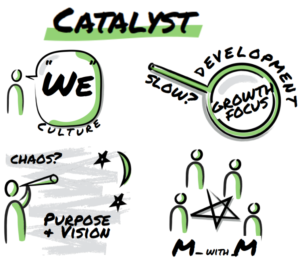
If more and more managers within an organization were to expand their own leadership skills towards Catalyst Leadership, they would form the foundation to achieve true adaptability within the company as a whole.
How to become a Catalyst Leader
The journey to expand your own leadership skills and to master additional leadership tools takes you through a process of self-reflection, feedback, and trial and error with new approaches. As such, becoming a Catalyst Leader is not something you can become after a two-day workshop.
Our training program for managers is made up of six modules, in which participants work their way through various aspects of Catalyst Leadership in on-site workshops and continually apply these in practice. In between the workshops, regular group meetings provide a space to reflect on success, obstacles, and challenges, as well as gain new insights and ideas to try out.
Additionally, we have a 360-degree feedback tool, which is based on the Leadership Agility model and provides concrete reference points for areas where there is a need for improvement in their management skills from the standpoint of the team, superiors, or stakeholders. Furthermore, all participants can take advantage of one-on-one coaching to look at individual challenges more closely.
It might sound like a lot of work. But success stories and positive feedback from the last five programs show that the investment is worth it. Developing organizations means developing people and so relies upon the personal transformation of those involved, which is something you can't merely steamroll through.
Our next program starts in October. You can find more information here – or feel free to get in touch to organize a call. In the meantime, read the other article we wrote for //Seibert/Media: Working from home: How management can help teams stay on track.


